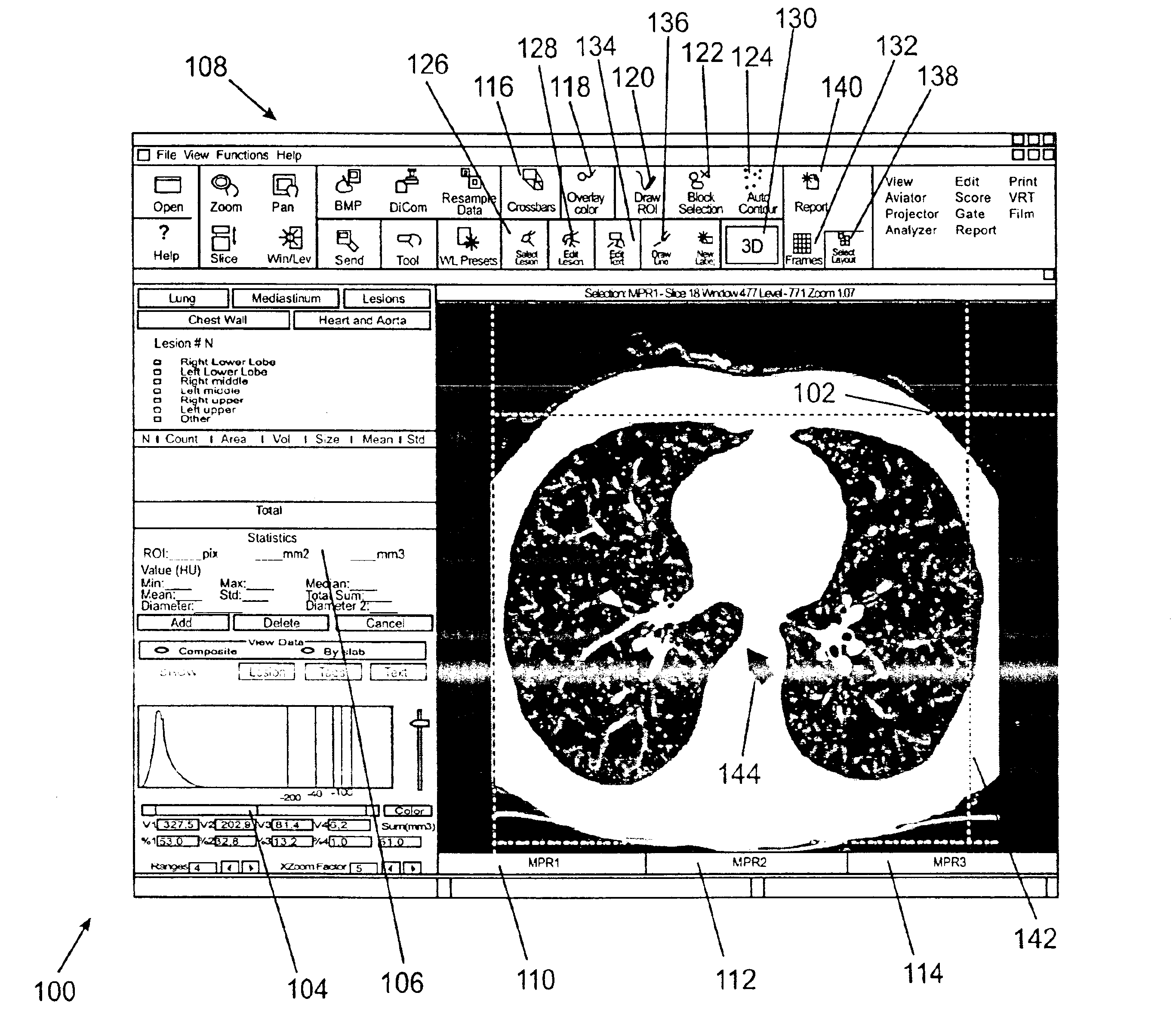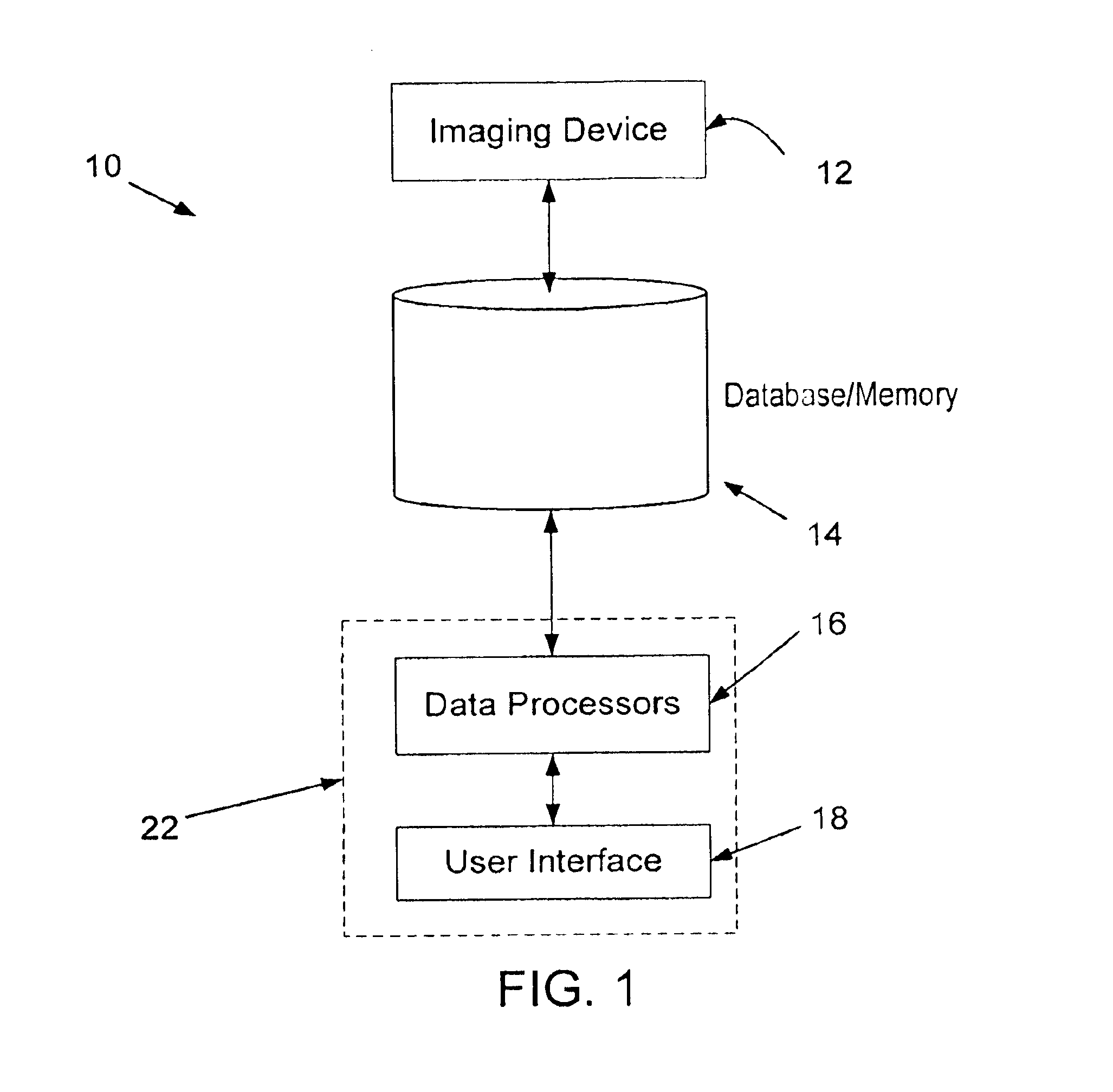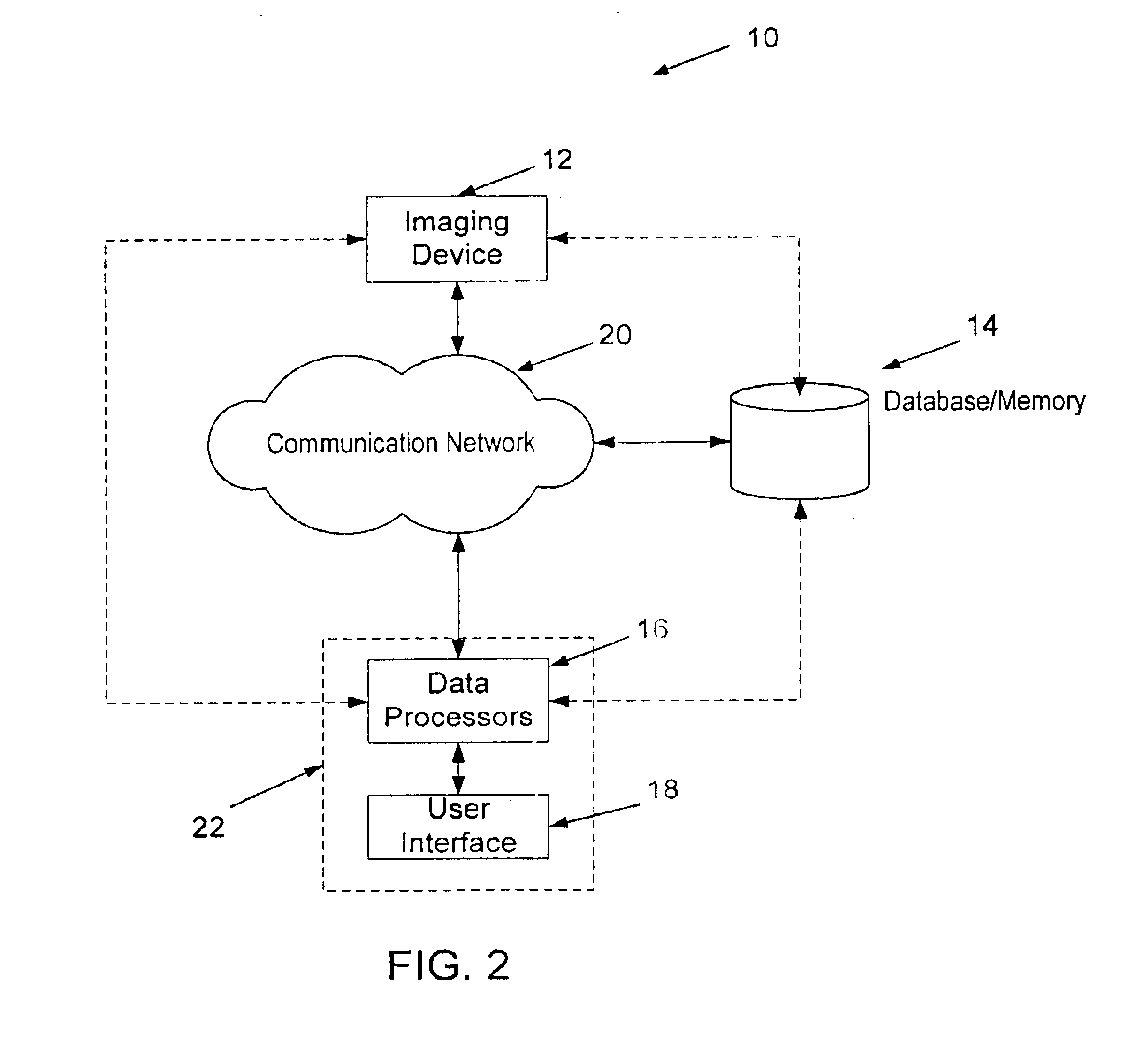Methods for generating a lung report
a lung and report technology, applied in the field of lung report generation, can solve the problems of too small to be reliably detected, appearance may be obscured, and the radiologist may miss a potential nodule in the analysis of the image dataset, so as to facilitate the localization of previously localized nodules and quickly locate nodules, either way
- Summary
- Abstract
- Description
- Claims
- Application Information
AI Technical Summary
Benefits of technology
Problems solved by technology
Method used
Image
Examples
Embodiment Construction
[0039]The present invention provides systems, software code, graphical user interfaces, and methods for displaying and analyzing lung CT or MRI image datasets of a patient. The lung datasets can be analyzed to map, track, and analyze the nodules in a series of lung slice images or image scans, as well as record other lung and chest abnormalities.
[0040]A lung slice image can be displayed on a user interface display for analysis by a radiologist or other operator. The methods of the present invention allows the radiologist to locate and map out the tumors, nodules, or lesions (hereinafter referred to as “nodules”) that are both manually localized and / or automatically localized by the software of the present invention. The mapped nodules can be segmented and have its volume and other dimensions ascertained. Such nodule information can then be transferred onto a lung report, if desired.
[0041]Exemplary embodiments of the present invention may allow an operator to compare a first, baselin...
PUM
 Login to View More
Login to View More Abstract
Description
Claims
Application Information
 Login to View More
Login to View More - R&D
- Intellectual Property
- Life Sciences
- Materials
- Tech Scout
- Unparalleled Data Quality
- Higher Quality Content
- 60% Fewer Hallucinations
Browse by: Latest US Patents, China's latest patents, Technical Efficacy Thesaurus, Application Domain, Technology Topic, Popular Technical Reports.
© 2025 PatSnap. All rights reserved.Legal|Privacy policy|Modern Slavery Act Transparency Statement|Sitemap|About US| Contact US: help@patsnap.com



